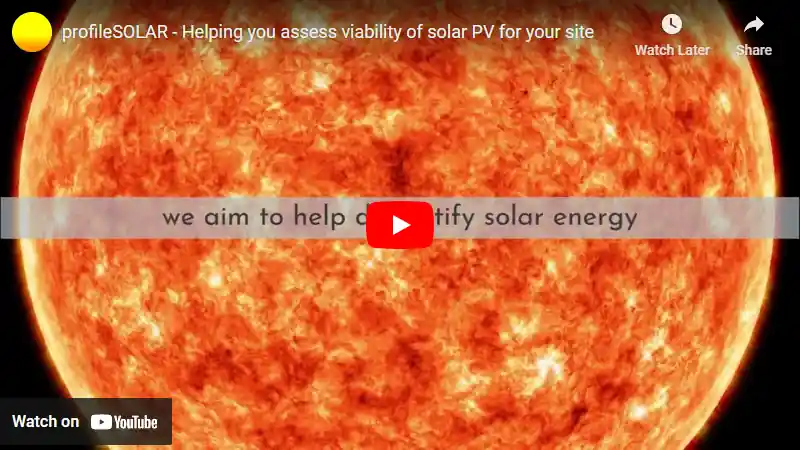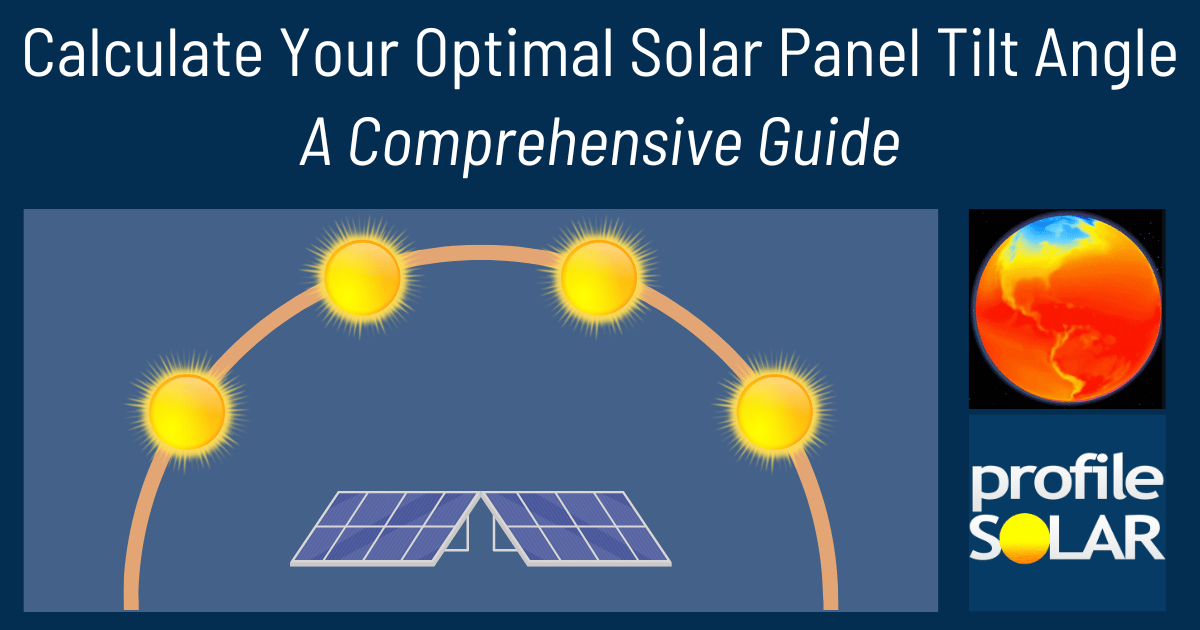

Beechworth, Victoria, Australia is a reasonable location for generating solar energy throughout the year. The amount of energy you can get from a solar panel depends on the season. In summer, you can expect to get about 8.19 kilowatt-hours (kWh) of energy per day for each kilowatt (kW) of solar panels installed. This decreases to 4.47 kWh/day in autumn and drops further to 2.45 kWh/day in winter before picking up again to 6.13 kWh/day in spring.
In simpler terms, your solar panels will generate more energy during the warmer months (summer and spring) compared to the cooler months (autumn and winter). Therefore, if you're planning on installing solar panels in Beechworth, it's ideal to have them up and running by summer or spring when they can produce more electricity.
To make sure your solar panels are as efficient as possible all year round, they should be tilted at an angle of 31 degrees facing north. This is because Beechworth is located in the Southern Hemisphere where sunlight comes from the north.
As for local factors that might affect how much sun your panels get: Beechworth is known for its historic buildings which could potentially block sunlight if they're nearby; it also has a relatively high amount of rainfall which could reduce sunlight exposure on cloudy or rainy days; and its hilly landscape might cause shadows at certain times of day depending on where exactly your property is located.
To work around these potential issues: Try not to install your panels near tall structures that could cast shadows; consider using more efficient types of solar cells that work better under less-than-ideal light conditions; and think about installing a tracking system so that your panels always face towards the sun as it moves across the sky during each day - this last option would increase production but also installation costs.
Note: The Southern Temperate Zone extends from -35° latitude South down to -66.5° latitude.
So far, we have conducted calculations to evaluate the solar photovoltaic (PV) potential in 392 locations across Australia. This analysis provides insights into each city/location's potential for harnessing solar energy through PV installations.
Link: Solar PV potential in Australia by location
Become the exclusive sponsor for Beechworth, Australia!
Solar output per kW of installed solar PV by season in Beechworth
Seasonal solar PV output for Latitude: -36.3532672, Longitude: 146.6923844 (Beechworth, Australia), based on our analysis of 8760 hourly intervals of solar and meteorological data (one whole year) retrieved for that set of coordinates/location from NASA POWER (The Prediction of Worldwide Energy Resources) API:




Ideally tilt fixed solar panels 31° North in Beechworth, Australia
To maximize your solar PV system's energy output in Beechworth, Australia (Lat/Long -36.3532672, 146.6923844) throughout the year, you should tilt your panels at an angle of 31° North for fixed panel installations.
As the Earth revolves around the Sun each year, the maximum angle of elevation of the Sun varies by +/- 23.45 degrees from its equinox elevation angle for a particular latitude. Finding the exact optimal angle to maximise solar PV production throughout the year can be challenging, but with careful consideration of historical solar energy and meteorological data for a certain location, it can be done precisely.
We use our own calculation, which incorporates NASA solar and meteorological data for the exact Lat/Long coordinates, to determine the ideal tilt angle of a solar panel that will yield maximum annual solar output. We calculate the optimal angle for each day of the year, taking into account its contribution to the yearly total PV potential at that specific location.

Seasonally adjusted solar panel tilt angles for Beechworth, Australia
If you can adjust the tilt angle of your solar PV panels, please refer to the seasonal tilt angles below for optimal solar energy production in Beechworth, Australia. As mentioned earlier, for fixed-panel solar PV installations, it is optimal to maintain a 31° North tilt angle throughout the year.
| Overall Best Summer Angle | Overall Best Autumn Angle | Overall Best Winter Angle | Overall Best Spring Angle |
|---|---|---|---|
| 20° North in Summer | 41° North in Autumn | 51° North in Winter | 29° North in Spring |
Our recommendations take into account more than just latitude and Earth's position in its elliptical orbit around the Sun. We also incorporate historical solar and meteorological data from NASA's Prediction of Worldwide Energy Resources (POWER) API to assign a weight to each ideal angle for each day based on its historical contribution to overall solar PV potential during a specific season.
This approach allows us to provide much more accurate recommendations than relying solely on latitude, as it considers unique weather conditions in different locations sharing the same latitude worldwide.
Topography for solar PV around Beechworth, Australia
Beechworth is located in the northeastern part of Victoria, Australia. The topography of the area can be described as hilly and mountainous, being situated in the foothills of the Victorian Alps. It is characterized by its high elevation and rugged terrain with a mix of open grasslands and dense forests.
When considering large-scale solar PV installations, it's important to consider factors such as sunlight exposure, land availability, slope of the land, and proximity to transmission lines. Flat or gently sloping areas are typically preferred for large-scale solar projects due to ease of installation and maintenance.
Given Beechworth's hilly terrain, it might not be an ideal location for a large-scale solar farm. However, nearby regions such as Wangaratta or Benalla which have flatter landscapes could potentially be more suited for this purpose.
Additionally, considering that Beechworth has a relatively cool climate compared to other parts of Australia (with average summer temperatures around 28 degrees Celsius), regions further north with higher amounts of sunlight throughout the year might be more efficient locations for solar energy production.
However specific site assessments would need to be conducted before deciding on a suitable location for largescale solar PV installations. These assessments would take into account various factors including but not limited to local climate conditions (such as annual sunshine hours), ground conditions (slope angle), accessibility (proximity to roads) etc.
Australia solar PV Stats as a country
Australia ranks 7th in the world for cumulative solar PV capacity, with 19,076 total MW's of solar PV installed. This means that 10.70% of Australia's total energy as a country comes from solar PV (that's 2nd in the world). Each year Australia is generating 742 Watts from solar PV per capita (Australia ranks 2nd in the world for solar PV Watts generated per capita). [source]
Are there incentives for businesses to install solar in Australia?
Yes, there are a variety of incentives available in Australia to businesses wanting to install solar energy. These include:
1. Renewable Energy Target (RET): The RET provides businesses with financial assistance for installing and operating renewable energy systems such as solar panels. Businesses may be eligible to receive certificates that can be sold or traded on the open market for additional income.
2. Feed-in Tariffs: Some states offer feed-in tariffs which pay businesses for generating and exporting excess electricity from their solar panel system back into the grid during peak demand periods.
3. Solar Credits: The Solar Credits program provides households and small business owners with an upfront discount when purchasing a new solar system, based on the amount of renewable energy generated by the system over its lifetime.
4. Tax Breaks: Small business owners may be able to claim tax deductions on certain expenses associated with installing a solar power system, including installation costs, maintenance expenses and interest payments related to financing arrangements taken out specifically for this purpose.
Do you have more up to date information than this on incentives towards solar PV projects in Australia? Please reach out to us and help us keep this information current. Thanks!
Feeling generous?

Share this with your friends!


Compare this location to others worldwide for solar PV potential
The solar PV analyses available on our website, including this one, are offered as a free service to the global community. Our aim is to provide education and aid informed decision-making regarding solar PV installations.
However, please note that these analyses are general guidance and may not meet specific project requirements. For in-depth, tailored forecasts and analysis crucial for feasibility studies or when pursuing maximum ROI from your solar projects, feel free to contact us; we offer comprehensive consulting services expressly for this purpose.
Helping you assess viability of solar PV for your site
Calculate Your Optimal Solar Panel Tilt Angle: A Comprehensive Guide
Enhance your solar panel's performance with our in-depth guide. Determine the best tilt angle using hard data, debunk common misunderstandings, and gain insight into how your specific location affects solar energy production.

.svg)





